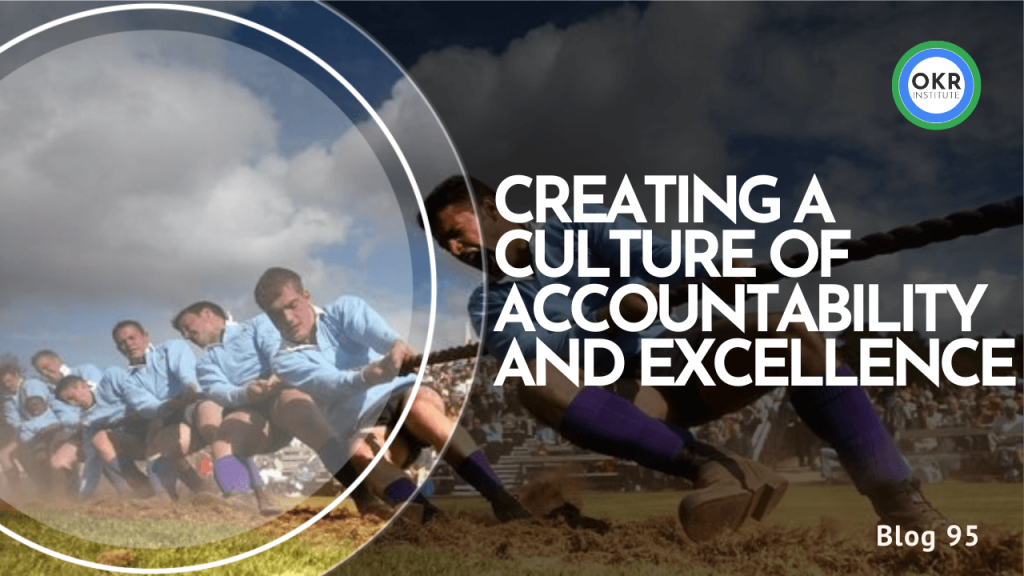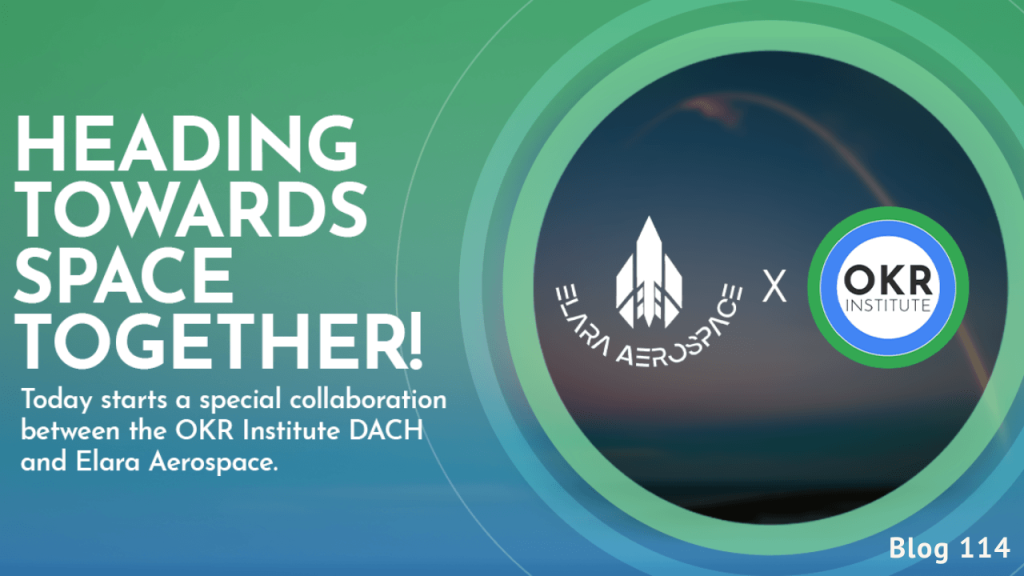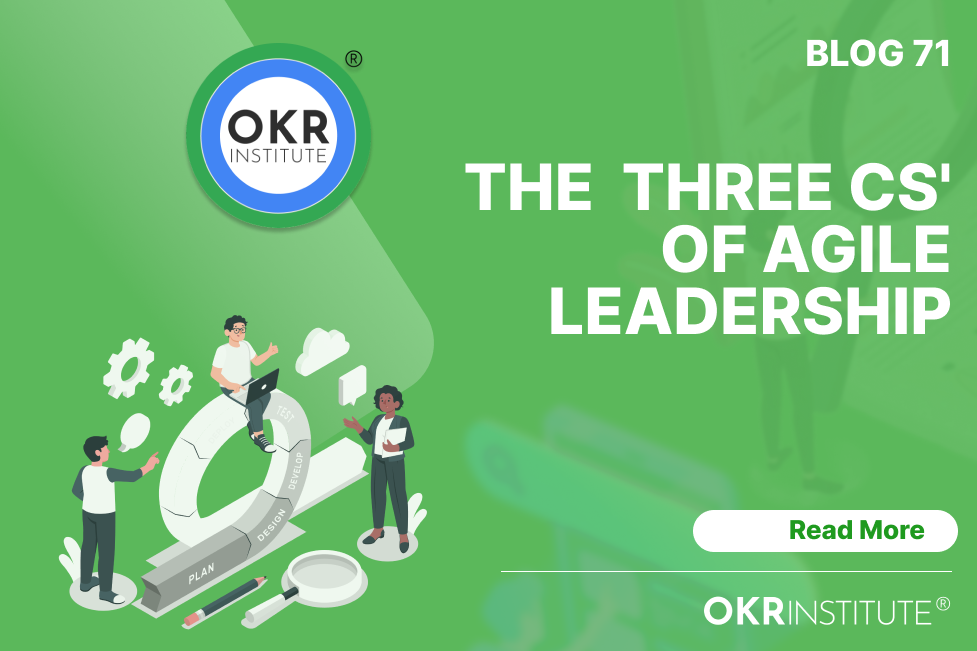Creating A Culture of Accountability and Excellence

Building Trust Within Teams
Trust is the foundation of effective teamwork and collaboration. When team members trust one another, they feel comfortable sharing ideas, admitting mistakes, and supporting each other’s growth. Building trust requires intentional effort and commitment from all team members.
Strategies for building trust within teams include:
Team-Building Activities: Engaging in team-building exercises and activities can help break down barriers and foster a sense of camaraderie. These activities can range from simple icebreakers to more elaborate outdoor adventures, depending on the team’s preferences and dynamics.
Open Communication: Encouraging open and honest communication is crucial for building trust. Team members should feel comfortable expressing their thoughts, concerns, and opinions without fear of judgment or retaliation. Regular team meetings, one-on-one check-ins, and open-door policies can facilitate open communication.
Vulnerability: Trust is built when team members are willing to be vulnerable and share their struggles, weaknesses, and challenges. Leaders can set the tone by modeling vulnerability and creating a safe space for team members to do the same.
Consistent Follow-Through: Trust is earned through consistent actions and follow-through. When team members consistently deliver on their promises and commitments, it builds a sense of reliability and trustworthiness.
Teams with high levels of trust experience numerous benefits, including improved collaboration, increased creativity, better problem-solving, and higher productivity. Trust also fosters a positive work environment, reducing stress and fostering a sense of psychological safety.
Effective Communication Strategies
Effective communication within teams is crucial for fostering collaboration, building trust, and achieving shared goals. One of the most important aspects of effective communication is active listening. Active listening involves fully concentrating on the speaker, understanding their message, and responding thoughtfully. It requires setting aside distractions, maintaining eye contact, and asking clarifying questions to ensure complete comprehension.
Clear and concise messaging is another essential element of effective communication. Team members should strive to convey their ideas and thoughts in a straightforward and organized manner, using simple language and avoiding unnecessary jargon or complexity. This clarity helps prevent misunderstandings and ensures that everyone is on the same page.
In today’s digital age, communication tools and platforms play a vital role in facilitating effective communication within teams. Tools like instant messaging, video conferencing, and project management software can streamline communication, enable real-time collaboration, and provide a centralized platform for sharing information and updates. However, it’s important to establish guidelines and best practices for using these tools to ensure consistent and appropriate communication.
Overcoming communication barriers is another critical aspect of effective communication strategies. These barriers can include language differences, cultural differences, physical distance, or personal biases. Teams should strive to create an environment where open and respectful communication is encouraged, and all perspectives are valued. Addressing communication barriers proactively can help prevent misunderstandings and foster a more inclusive and collaborative team dynamic.
Finally, non-verbal communication plays a significant role in effective communication. Body language, facial expressions, and tone of voice can convey a wealth of information and can either reinforce or contradict verbal messages. Team members should be mindful of their non-verbal cues and strive to align them with their verbal communication. Additionally, being observant of others’ non-verbal cues can provide valuable insights into their thoughts and feelings, fostering better understanding and connection within the team.
Understanding OKRs and KPIs
Objectives and Key Results (OKRs) and Key Performance Indicators (KPIs) are powerful tools for setting goals and measuring progress within teams and organizations. OKRs provide a framework for defining ambitious yet achievable objectives, while KPIs serve as quantifiable metrics to track progress and success.
Defining OKRs and KPIs
OKRs consist of two components: Objectives and Key Results. Objectives are qualitative, inspirational goals that define what needs to be accomplished. Key Results are specific, measurable, and time-bound targets that support the achievement of the corresponding Objective.
KPIs, on the other hand, are quantifiable metrics that measure the performance of specific processes, activities, or outcomes. They provide a clear indication of progress towards desired goals and help identify areas for improvement.
Benefits of Using OKRs and KPIs
- Alignment: OKRs and KPIs help align team efforts with organizational strategies and priorities, ensuring everyone is working towards common goals.
- Focus and Prioritization: By setting clear objectives and measurable targets, teams can prioritize their efforts and allocate resources effectively.
- Transparency and Accountability: Regular tracking and reporting of OKRs and KPIs promote transparency and accountability within teams and across the organization.
- Continuous Improvement: Monitoring KPIs allows teams to identify areas for improvement and make data-driven decisions to enhance performance.
Examples of OKRs and KPIs in Action
- Objective: Increase customer satisfaction
- Key Result 1: Achieve a Net Promoter Score (NPS) of 70 by the end of the quarter.
- Key Result 2: Reduce average response time for customer inquiries to under 4 hours.
- KPIs: NPS, Average Response Time, Customer Retention Rate.
- Objective: Enhance product quality
- Key Result 1: Reduce critical defects by 50% compared to the previous release.
- Key Result 2: Achieve a 90% pass rate for automated test cases.
- KPIs: Defect Density, Test Coverage, Code Quality Metrics.
Best Practices for Setting and Tracking OKRs and KPIs
- Involve team members in the goal-setting process to foster buy-in and ownership.
- Ensure OKRs and KPIs are specific, measurable, achievable, relevant, and time-bound (SMART).
- Align OKRs and KPIs with broader organizational goals and strategies.
- Regularly review and adjust OKRs and KPIs as needed to adapt to changing circumstances.
- Celebrate successes and learn from missed targets to continuously improve.
- Leverage data visualization and reporting tools to effectively communicate and track progress.
By effectively implementing OKRs and KPIs, teams can maintain focus, measure progress, and drive continuous improvement, ultimately contributing to the overall success of the organization.
Aligning Teams with Organizational Vision and Mission
Having a clear and inspiring vision and mission is crucial for any organization to thrive. It serves as a guiding light, providing direction and purpose to all team efforts and initiatives. When teams are aligned with the organization’s overarching vision and mission, it fosters a sense of unity, motivation, and a shared understanding of the collective goals.
Effectively communicating the vision and mission to teams is paramount. Organizations should make conscious efforts to disseminate these core principles through various channels, such as team meetings, internal communications, and training sessions. By doing so, teams gain a deeper appreciation for the organization’s aspirations and the impact their contributions have on achieving those goals.
Moreover, aligning team goals and efforts with the organizational strategies is essential for success. Teams should actively participate in translating the broader vision and mission into actionable objectives and key results (OKRs) that are specific to their respective domains. This alignment ensures that every team’s efforts are synchronized and working towards the same overarching objectives, maximizing the collective impact and minimizing siloed or misaligned endeavors.
Regular check-ins and progress reviews can help reinforce the connection between team efforts and the organization’s vision and mission. Celebrating milestones and successes that contribute to the larger goals can further strengthen the sense of purpose and motivation within teams.
By fostering a deep understanding of the organization’s vision and mission, and actively aligning team goals and efforts with these guiding principles, organizations can unlock the full potential of their teams, driving innovation, collaboration, and sustained success.
Fostering a Culture of Ownership
Ownership and accountability are essential ingredients for creating a high-performing and engaged workforce. When employees feel a sense of ownership over their work, they are more likely to take responsibility, be proactive, and go the extra mile to achieve success. A culture of ownership fosters an environment where individuals are empowered to make decisions, take calculated risks, and contribute their unique perspectives and ideas.
The benefits of cultivating a culture of ownership are numerous. It promotes a sense of pride and investment in the organization’s mission, leading to increased motivation and job satisfaction. Employees who feel a sense of ownership are more likely to be innovative and creative, as they are encouraged to think outside the box and take ownership of their ideas. Additionally, a culture of ownership can lead to improved decision-making, as employees are empowered to make informed choices that align with the organization’s goals.
To foster a culture of ownership, organizations can implement several strategies:
- Empowerment: Provide employees with the autonomy and resources they need to take ownership of their work. Encourage them to make decisions and take calculated risks within their areas of expertise, and support them when they do.
- Delegation: Delegate tasks and projects to employees, giving them the opportunity to take ownership and responsibility for their successful completion. This not only fosters a sense of ownership but also develops leadership skills and builds confidence.
- Recognition: Recognize and celebrate employees who demonstrate ownership and accountability. This can be done through formal recognition programs, public acknowledgment, or simply by expressing gratitude and appreciation for their efforts.
- Clear Expectations: Clearly communicate expectations and responsibilities to employees, ensuring that they understand their roles and the impact their work has on the organization’s success.
- Continuous Learning: Encourage continuous learning and professional development opportunities, empowering employees to take ownership of their growth and skill development.
- Transparency: Foster an environment of transparency by sharing information openly and involving employees in decision-making processes. This helps build trust and reinforces the idea that everyone has a stake in the organization’s success.
By implementing these strategies, organizations can cultivate a culture of ownership that empowers employees, drives innovation, and ultimately contributes to the overall success of the organization.
Implementing Effective Feedback Loops
Feedback is a crucial component of fostering a culture of accountability and continuous improvement within teams. It provides valuable insights, identifies areas for growth, and reinforces positive behaviors. Effective feedback loops involve a structured approach to soliciting, delivering, and acting upon feedback from various stakeholders.
There are several types of feedback loops that teams can implement:
- Peer-to-Peer Feedback: This type of feedback involves team members providing constructive feedback to their colleagues. It promotes collaboration, accountability, and a shared understanding of expectations.
- Manager-to-Employee Feedback: Managers play a pivotal role in providing feedback to their team members. Regular one-on-one meetings and performance reviews offer opportunities for managers to provide guidance, recognize achievements, and address areas for improvement.
- Employee-to-Manager Feedback: Encouraging employees to provide feedback to their managers can foster a culture of open communication and continuous improvement. This feedback can help managers identify areas where they can better support their teams and enhance their leadership skills.
- 360-Degree Feedback: This comprehensive approach involves gathering feedback from multiple sources, including peers, managers, direct reports, and even external stakeholders. It provides a well-rounded perspective on an individual’s strengths and areas for development.
To implement effective feedback loops, it’s essential to follow best practices for giving and receiving feedback:
- Be Specific and Actionable: Feedback should be clear, concise, and focused on specific behaviors or outcomes. Provide concrete examples and actionable suggestions for improvement.
- Maintain a Constructive Tone: Feedback should be delivered in a respectful and supportive manner, focusing on the desired outcomes rather than personal critiques.
- Encourage Two-Way Dialogue: Feedback should be a conversation, not a one-way lecture. Encourage open dialogue and actively listen to the recipient’s perspective and concerns.
- Provide Timely Feedback: Feedback should be given promptly, while the situation or behavior is still fresh in everyone’s mind. Timely feedback increases the likelihood of positive change.
- Celebrate Successes: Positive feedback is equally important. Recognize and reinforce behaviors and achievements that contribute to team success.
Creating a feedback-friendly culture is essential for the effective implementation of feedback loops. This can be achieved by:
- Leading by Example: Leaders and managers should model the behavior they expect from their teams by actively seeking and acting upon feedback.
- Providing Training: Offer training on effective feedback techniques, active listening, and constructive communication to ensure everyone understands the value and process of feedback.
- Establishing Regular Feedback Cycles: Incorporate feedback sessions into regular team meetings, project retrospectives, and performance reviews to reinforce the importance of continuous improvement.
- Fostering Psychological Safety: Create an environment where team members feel comfortable expressing their thoughts and concerns without fear of retaliation or judgment.
By implementing effective feedback loops and fostering a feedback-friendly culture, teams can promote accountability, continuous improvement, and a shared commitment to achieving organizational goals.
Team-Building Activities for Trust and Collaboration
Team-building activities are structured exercises designed to foster trust, communication, and collaboration among team members. These activities can take various forms, ranging from indoor games to outdoor challenges, and are typically facilitated by a trained professional or team leader.
Examples of Team-Building Activities
- Icebreakers: These are short, fun activities that help team members get to know each other better and break down initial barriers. Examples include “Two Truths and a Lie,” where participants share three statements about themselves (two true and one false), and others guess which one is the lie.
- Problem-Solving Challenges: These activities require team members to work together to solve a specific problem or complete a task. Examples include building a structure using limited materials, solving a puzzle, or navigating an obstacle course.
- Trust-Building Exercises: These activities focus on building trust and fostering a sense of safety within the team. Examples include blindfolded trust walks, where one person guides a blindfolded partner through an obstacle course, or group falls, where team members take turns falling backward and being caught by their colleagues.
- Communication Exercises: These activities aim to improve communication skills, such as active listening, clear messaging, and nonverbal communication. Examples include mirroring exercises, where pairs must mirror each other’s movements without speaking, or storytelling activities, where team members take turns adding to a collective story.
Benefits of Team-Building Activities
- Improved Trust and Collaboration: By engaging in activities that require teamwork, communication, and problem-solving, team members develop a deeper sense of trust and understanding, leading to better collaboration.
- Enhanced Communication: Team-building activities provide opportunities to practice effective communication skills, such as active listening, clear messaging, and nonverbal communication, which can translate to improved communication within the workplace.
- Increased Motivation and Morale: Participating in fun and engaging activities can boost team morale, increase motivation, and foster a positive work environment.
- Identification of Strengths and Weaknesses: Team-building activities can reveal individual and team strengths and weaknesses, allowing for targeted areas of improvement and better utilization of team members’ skills.
Considerations for Planning and Facilitating Team-Building Events
- Clear Objectives: Define the specific goals and desired outcomes of the team-building activities, such as improving communication, building trust, or enhancing problem-solving skills.
- Inclusive and Diverse Activities: Choose activities that are inclusive and accommodate diverse abilities, backgrounds, and preferences within the team.
- Safe and Comfortable Environment: Ensure that the activities take place in a safe and comfortable environment, both physically and emotionally, to encourage participation and vulnerability.
- Skilled Facilitation: Engage a trained facilitator or team leader who can effectively guide the activities, manage group dynamics, and provide constructive feedback.
- Follow-Up and Reinforcement: After the team-building event, follow up with participants to reinforce the lessons learned and encourage the application of new skills and insights in the workplace.
By carefully planning and facilitating team-building activities, organizations can foster a culture of trust, collaboration, and effective communication, ultimately enhancing team performance and achieving better results.
Overcoming Communication Barriers in Teams
Effective communication is the lifeblood of any successful team, yet it’s often easier said than done. Teams can face a variety of communication barriers that hinder collaboration, productivity, and overall performance. Some common barriers include language differences, remote work challenges, hierarchical structures, and personal biases.
Language differences can create misunderstandings and miscommunications, especially in diverse or multinational teams. To overcome this barrier, teams should encourage the use of clear and simple language, provide language resources or training when needed, and foster an environment of patience and respect for different communication styles.
Remote work presents unique communication challenges, such as lack of face-to-face interaction, time zone differences, and potential miscommunication due to the absence of nonverbal cues. To address these issues, teams should establish clear communication protocols, leverage video conferencing tools, and prioritize regular check-ins and updates.
Hierarchical structures can discourage open communication and create power dynamics that inhibit feedback and idea-sharing. Teams should work to break down these barriers by promoting a culture of psychological safety, where all voices are valued and respected, regardless of position or rank.
Personal biases, such as confirmation bias or anchoring bias, can also impede effective communication. Teams should strive for self-awareness and actively work to counteract these biases through practices like active listening, seeking diverse perspectives, and encouraging respectful dissent.
Strategies for overcoming communication barriers include:
- Clear Communication Protocols: Establish guidelines for communication channels, response times, and meeting etiquette to ensure consistency and clarity.
- Active Listening: Practice active listening techniques, such as paraphrasing, asking clarifying questions, and avoiding interruptions, to ensure understanding and foster a respectful communication environment.
- Feedback and Transparency: Encourage open and honest feedback, and promote transparency by sharing information and decision-making processes with the entire team.
- Diversity and Inclusion: Embrace diversity in communication styles, perspectives, and backgrounds, and create an inclusive environment where all voices are heard and valued.
- Communication Training: Invest in communication training and resources to help team members develop effective communication skills, such as public speaking, written communication, and cross-cultural communication.
Additionally, teams can leverage various tools and technologies to facilitate communication, such as video conferencing platforms (e.g., Zoom, Microsoft Teams), instant messaging apps (e.g., Slack, Microsoft Teams), project management software (e.g., Asana, Trello), and collaborative document editing tools (e.g., Google Docs, Microsoft Office 365).
By proactively addressing communication barriers and implementing effective strategies and tools, teams can foster an environment of open, transparent, and inclusive communication, ultimately leading to better collaboration, decision-making, and overall team performance.
Setting Effective OKRs and KPIs
Establishing clear and measurable goals is crucial for aligning team efforts and driving success. Objectives and Key Results (OKRs) and Key Performance Indicators (KPIs) are powerful tools for setting and tracking goals, but their effectiveness relies on careful implementation.
When setting OKRs and KPIs, it’s essential to follow the SMART principle – ensuring goals are Specific, Measurable, Achievable, Relevant, and Time-bound. Specific goals provide clarity and direction, while measurable targets enable progress tracking. Achievable goals motivate teams by presenting a challenge without being unrealistic. Relevant goals align with the organization’s broader strategies and priorities, and time-bound goals create a sense of urgency and accountability.
Involving teams in the goal-setting process is key to fostering ownership and commitment. Encourage open discussions, gather input, and ensure that team members understand the rationale behind the goals. This collaborative approach not only increases buy-in but also leverages the collective expertise and insights of the team.
Aligning individual and team OKRs and KPIs is essential for ensuring cohesion and collective progress. Individual goals should ladder up to team goals, which in turn should support broader organizational objectives. This alignment ensures that everyone is working towards a common purpose and that individual efforts contribute to the overall success of the organization.
It’s also important to cascade goals throughout the organization, ensuring that teams at all levels are working towards aligned objectives. This cascading approach promotes transparency, facilitates cross-functional collaboration, and enables teams to understand how their efforts fit into the bigger picture.
Regular review and adjustment of OKRs and KPIs are necessary to maintain relevance and adapt to changing circumstances. Encourage teams to continuously evaluate their goals, celebrate successes, and make adjustments as needed. This iterative process fosters a culture of continuous improvement and ensures that goals remain aligned with evolving priorities and market conditions.
Communicating Organizational Vision and Mission
Effectively communicating an organization’s vision and mission is crucial for aligning teams and inspiring them to work towards a common goal. A well-articulated vision and mission serve as a guiding light, providing direction and purpose to the collective efforts of employees.
One powerful strategy for communicating the vision and mission is through storytelling. By crafting a compelling narrative that resonates with employees, organizations can create an emotional connection and foster a sense of belonging. Storytelling allows leaders to paint a vivid picture of the organization’s aspirations, values, and the impact it aims to create in the world.
Visual aids can also be invaluable in communicating the vision and mission. Infographics, videos, and presentations that incorporate engaging visuals can help employees better understand and internalize the organization’s goals and objectives. These visual elements can break down complex concepts into easily digestible formats, making the vision and mission more accessible and memorable.
Engaging employees in the process of defining and refining the vision and mission is another effective strategy. By involving employees from various levels and departments, organizations can tap into diverse perspectives and ensure that the vision and mission resonate with the entire workforce. This collaborative approach fosters a sense of ownership and commitment, as employees feel invested in the organization’s direction.
Furthermore, it is essential to align day-to-day work with the vision and mission. Leaders should consistently reinforce how individual tasks and projects contribute to the larger organizational goals. By drawing clear connections between daily responsibilities and the overarching vision and mission, employees can better understand the significance of their roles and feel motivated to contribute to the collective success.
Regular communication and reinforcement of the vision and mission are also crucial. Organizations should seize opportunities to reiterate their values and aspirations during team meetings, company-wide events, and internal communications. Consistent messaging helps to ingrain the vision and mission into the organizational culture, ensuring that they remain top of mind for all employees.
By effectively communicating the organizational vision and mission through storytelling, visual aids, employee engagement, and consistent reinforcement, organizations can create a shared sense of purpose and inspire their teams to work towards a common goal with passion and dedication.
Empowering Teams Through Ownership
Empowering teams with a sense of ownership over their work is a powerful driver of engagement, productivity, and innovation. When team members feel a genuine sense of responsibility and authority over their tasks and projects, they are more likely to approach their work with heightened motivation, commitment, and a solutions-oriented mindset.
One of the primary benefits of empowered teams is increased autonomy. By granting teams the freedom to make decisions, set their own goals, and determine their approach to achieving objectives, organizations tap into the collective expertise and creativity of their workforce. This autonomy fosters a sense of ownership, as team members feel trusted and valued for their contributions.
Strategies for empowering teams through ownership include:
- Delegating Decision-Making Authority: Instead of micromanaging, leaders should delegate decision-making authority to teams, allowing them to make informed choices that align with organizational goals and values.
- Encouraging Self-Organization: Empower teams to self-organize, determine their roles and responsibilities, and manage their own workflows and processes. This fosters a sense of ownership and accountability within the team.
- Providing Resources and Support: While granting autonomy, it’s crucial to provide teams with the necessary resources, training, and support they need to succeed. This includes access to information, tools, and subject matter experts.
- Celebrating Successes and Failures: Recognize and celebrate team achievements, but also create a culture where failures are viewed as learning opportunities. This reinforces a sense of ownership and encourages continuous improvement.
However, it’s essential to balance ownership with accountability. While empowering teams, leaders should establish clear expectations, goals, and metrics for success. Regular check-ins, progress updates, and feedback loops ensure that teams remain aligned with organizational objectives and maintain a high level of accountability.
By fostering a culture of ownership within teams, organizations can unlock the full potential of their workforce, driving innovation, engagement, and sustained success.
Creating a Feedback-Friendly Culture
In today’s fast-paced business environment, fostering a culture that embraces feedback is crucial for continuous improvement and growth. A feedback-friendly culture promotes open communication, fosters trust, and encourages employees to share their ideas and concerns without fear of repercussions.
Importance of a Feedback-Friendly Culture
A feedback-friendly culture has numerous benefits for organizations:
- Continuous Improvement: Feedback provides valuable insights into areas that need improvement, enabling organizations to identify and address issues proactively.
- Employee Engagement: When employees feel their voices are heard and their contributions are valued, they are more likely to be engaged and motivated, leading to increased productivity and job satisfaction.
- Innovation: By encouraging diverse perspectives and open dialogue, a feedback-friendly culture fosters creativity and innovation, allowing organizations to adapt and stay ahead of the competition.
- Trust and Transparency: A culture that promotes honest and constructive feedback cultivates trust and transparency among team members, strengthening relationships and collaboration.
Strategies for Creating a Feedback-Friendly Culture
Establishing a feedback-friendly culture requires a deliberate and sustained effort from both leaders and employees. Here are some effective strategies:
- Leadership Buy-In: Leaders must lead by example and actively seek feedback from their teams. They should create a safe environment where feedback is welcomed and valued, and address concerns or issues raised in a timely and respectful manner.
- Training and Development: Provide training on effective communication, active listening, and giving and receiving feedback constructively. This helps employees develop the necessary skills to engage in productive feedback exchanges.
- Recognition and Rewards: Recognize and reward employees who embrace feedback and contribute to a culture of continuous improvement. This reinforces positive behaviors and encourages others to follow suit.
- Feedback Mechanisms: Implement formal and informal feedback mechanisms, such as regular one-on-one meetings, anonymous feedback channels, or dedicated feedback sessions. This ensures that feedback is actively solicited and encouraged.
- Feedback Loops: Establish feedback loops to ensure that feedback is not only received but also acted upon. Follow up on feedback, communicate actions taken, and celebrate successes to demonstrate the value of feedback.
Addressing Feedback Avoidance and Resistance
Despite the benefits of a feedback-friendly culture, some employees may resist or avoid feedback due to various reasons, such as fear of criticism, defensiveness, or lack of trust. To overcome these challenges, consider the following strategies:
- Normalize Feedback: Integrate feedback into regular processes and conversations, making it a natural part of the organizational culture. This helps reduce the stigma associated with feedback and makes it more acceptable.
- Focus on Growth: Emphasize that feedback is an opportunity for growth and development, rather than criticism or punishment. Encourage a growth mindset and celebrate learning from feedback.
- Build Trust: Foster an environment of trust and psychological safety, where employees feel comfortable expressing their thoughts and concerns without fear of negative consequences.
- Provide Training: Offer training on giving and receiving feedback effectively, addressing common concerns, and developing a positive mindset towards feedback.
By implementing these strategies and addressing feedback avoidance and resistance, organizations can create a culture that embraces feedback, fosters continuous improvement, and drives success.
Measuring the Impact of Team Initiatives
Implementing team initiatives and fostering a collaborative culture is essential, but measuring their impact is equally crucial. Without proper evaluation, it becomes challenging to assess the effectiveness of these efforts and make data-driven decisions for improvement. By establishing relevant metrics and key performance indicators (KPIs), organizations can quantify the success of their team initiatives and ensure they align with broader organizational goals.
Metrics and KPIs for measuring team success can vary depending on the nature of the initiatives and the desired outcomes. Some common examples include:
- Productivity metrics: Tracking team output, such as the number of tasks completed, projects delivered, or goals achieved within a specific timeframe.
- Quality metrics: Assessing the quality of team deliverables, customer satisfaction scores, or error rates.
- Collaboration metrics: Measuring the level of collaboration and communication within teams, such as the frequency of meetings, knowledge sharing, or cross-functional collaboration.
- Employee engagement metrics: Evaluating employee satisfaction, motivation, and retention rates, which can be indicators of a healthy team culture.
By regularly collecting and analyzing data related to these metrics, organizations can gain valuable insights into the impact of their team initiatives. This data can then be used to identify areas of strength and opportunities for improvement, allowing teams to iterate and refine their approaches.
Moreover, data-driven decision-making empowers teams to make informed choices and continuously optimize their processes. By leveraging data analytics and visualization tools, teams can easily track their progress, identify patterns and trends, and make evidence-based decisions to enhance their performance and overall effectiveness.
Measuring the impact of team initiatives is not a one-time exercise but rather an ongoing process. As teams evolve and new challenges arise, it is essential to regularly review and adjust the metrics and KPIs to ensure they remain relevant and aligned with the organization’s evolving goals and priorities.
Addressing Remote and Hybrid Team Challenges
The rise of remote and hybrid work environments has introduced unique challenges for teams in building trust, fostering collaboration, and maintaining effective communication. In a dispersed workforce, the lack of face-to-face interactions can hinder the development of strong interpersonal connections and trust among team members.
To overcome these challenges, it is crucial to prioritize trust-building activities that create a sense of camaraderie and shared purpose, even when team members are physically separated. Virtual team-building exercises, such as online games, icebreakers, and collaborative projects, can help bridge the distance and foster a sense of unity.
Effective communication is another critical aspect of successful remote and hybrid teams. Clear and transparent communication channels must be established to ensure that information flows seamlessly and that everyone is on the same page. Utilizing video conferencing tools, instant messaging platforms, and project management software can facilitate real-time collaboration, reduce misunderstandings, and ensure that important updates and decisions are shared promptly.
Additionally, it is essential to establish guidelines and protocols for remote and hybrid team interactions. Setting expectations around response times, meeting etiquette, and communication norms can help maintain a professional and productive work environment, even when team members are physically dispersed.
Embracing tools and technologies specifically designed for remote and hybrid teams can further enhance collaboration and productivity. Cloud-based file-sharing platforms, virtual whiteboards, and collaborative document editing tools enable seamless collaboration, regardless of location.
Ultimately, addressing the unique challenges of remote and hybrid teams requires a proactive approach to building trust, fostering open communication, and leveraging the right tools and technologies. By prioritizing these aspects, organizations can unlock the full potential of their dispersed workforce and achieve success in a rapidly evolving work landscape.
CEO of the OKR Institute
Related Courses
Recent Posts
Tags
#OKR
#OKR Implementation
#Accountability







